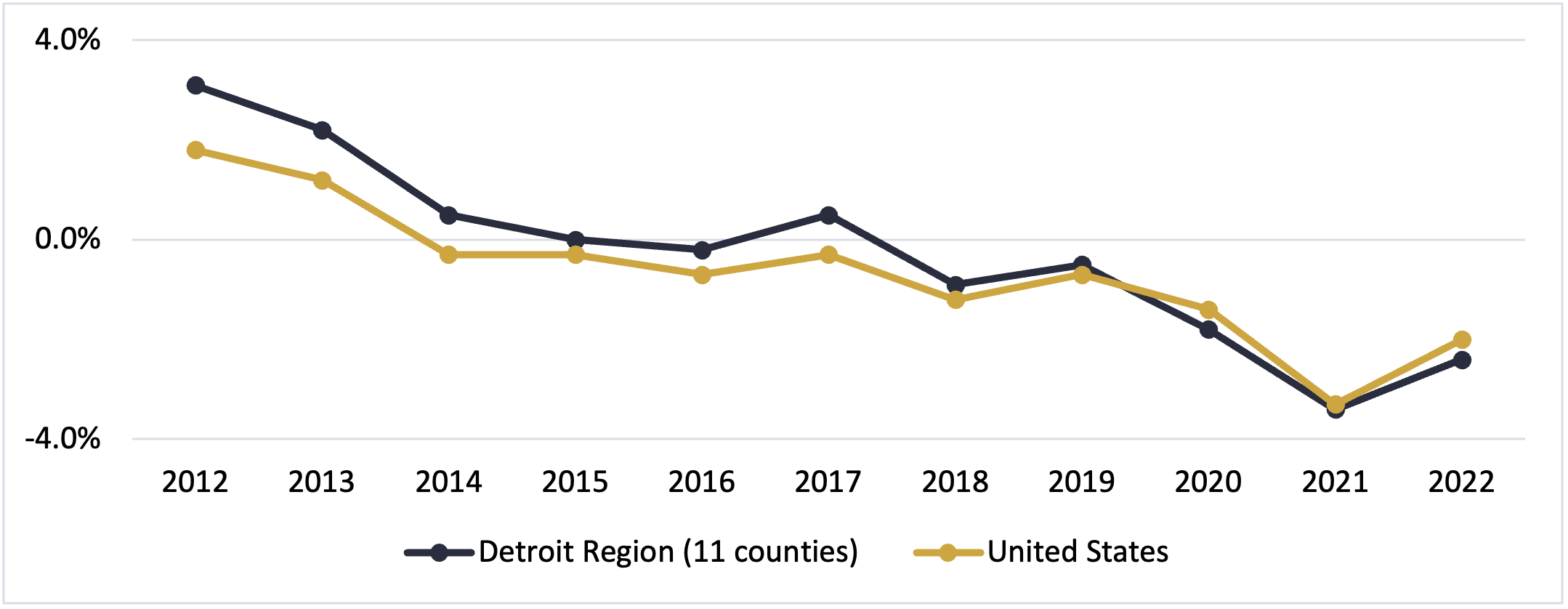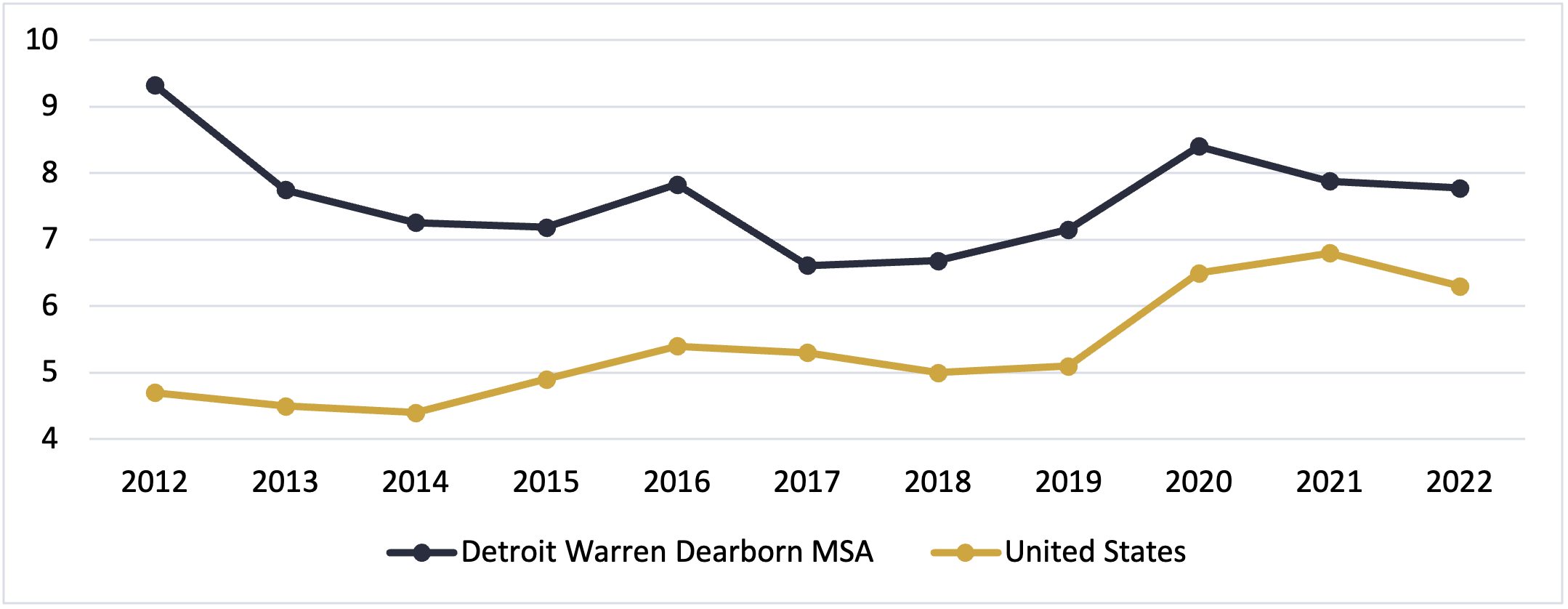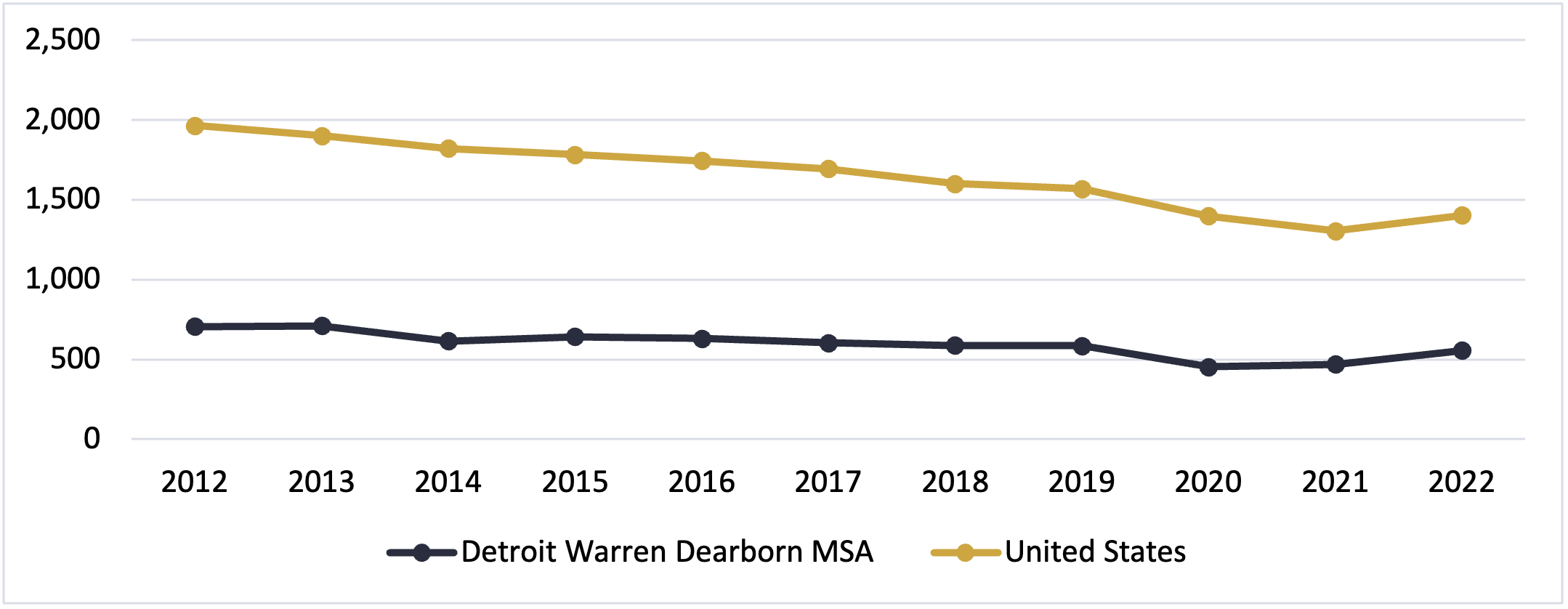Profile: Social Statistics
Figure 1: Housing Permits (Units), 2007-2023

Between 2000 and 2005, the Detroit region experienced high growth of residential construction, seeing between 20K and 30K permits per year. The growth slowed substantially leading up to the Great Recession, where annual permits hit just under 2,000 in 2009. Annual permits have not reached pre-2007 levels but have been growing. Since 2012, permit growth rates have followed national trends, growing much faster than the national average in 2013 and 2017 at 26.2% and 14.6% growth. However, there was substantially lower growth in 2018 with a 6.1% decrease.
Figure 2: Growth in Recipients of Social Security & Disability Benefits, 2012-2022

The distribution of Social Security and Disability benefits in the Detroit region had been steadily declining from 2012 to 2014, seeing slower growth in each year. The growth trend then stabilized in 2015, seeing 0.9% growth in each year from 2015 to 2017 and 0.8% growth in 2018. Growth in recipients of Social Security and Disability benefits has been slowing since 2019 and fell below 0% in 2021.
Figure 3: Growth in SSI Recipients, 2012-2022

Growth in the number of Social Security and Supplemental Security Income (SSI) recipients in the Detroit region has followed a similar trajectory to benefit distributions by declining from 2012 to 2014, stabilizing until 2019, and then declining again through 2021. Growth in recipients of SSI has been negative in the Detroit region since 2018, following a nearly identical trend as the national average. There was slightly faster growth in recipients of SSI from 2021 to 2022.
Figure 4: Murder Rate (Per 100,000 Population), 2012-2022

Even with a slight data adjustment due to reporting differences in the FBI’s new online data system, the Detroit-Warren-Dearborn Metropolitan Statistical Area (MSA) has a higher murder rate when compared to the US average. In 2012, the MSA experienced over 9 murders per 100,000 people, almost double the 2012 national rate (4.7 per 100,000 people). The MSA’s murder rate dropped to 6.6 per 100,000 in 2017 and has experienced heightened levels of this crime since the COVID pandemic. However, this trend was increasing prior to the pandemic.
Figure 5: Larceny/Theft Rate (Per 100,000 population), 2012-2022

Meanwhile, incidents of larceny and theft are lower in the Detroit-Warren-Dearborn MSA compared to the nation overall. In fact, the larceny/theft rate in the MSA has remained consistent from 2012 to 2022. The rates of this crime in the MSA and the US in 2022 were 557 per 100,000 and 1,402 per 100,000. The MSA has seen a slight increase in larceny and theft since 2020 as well.

